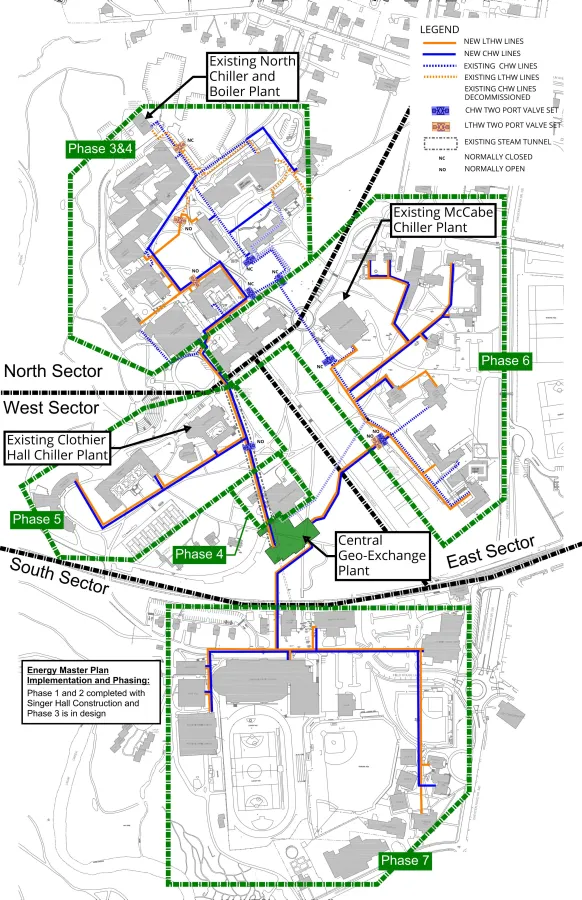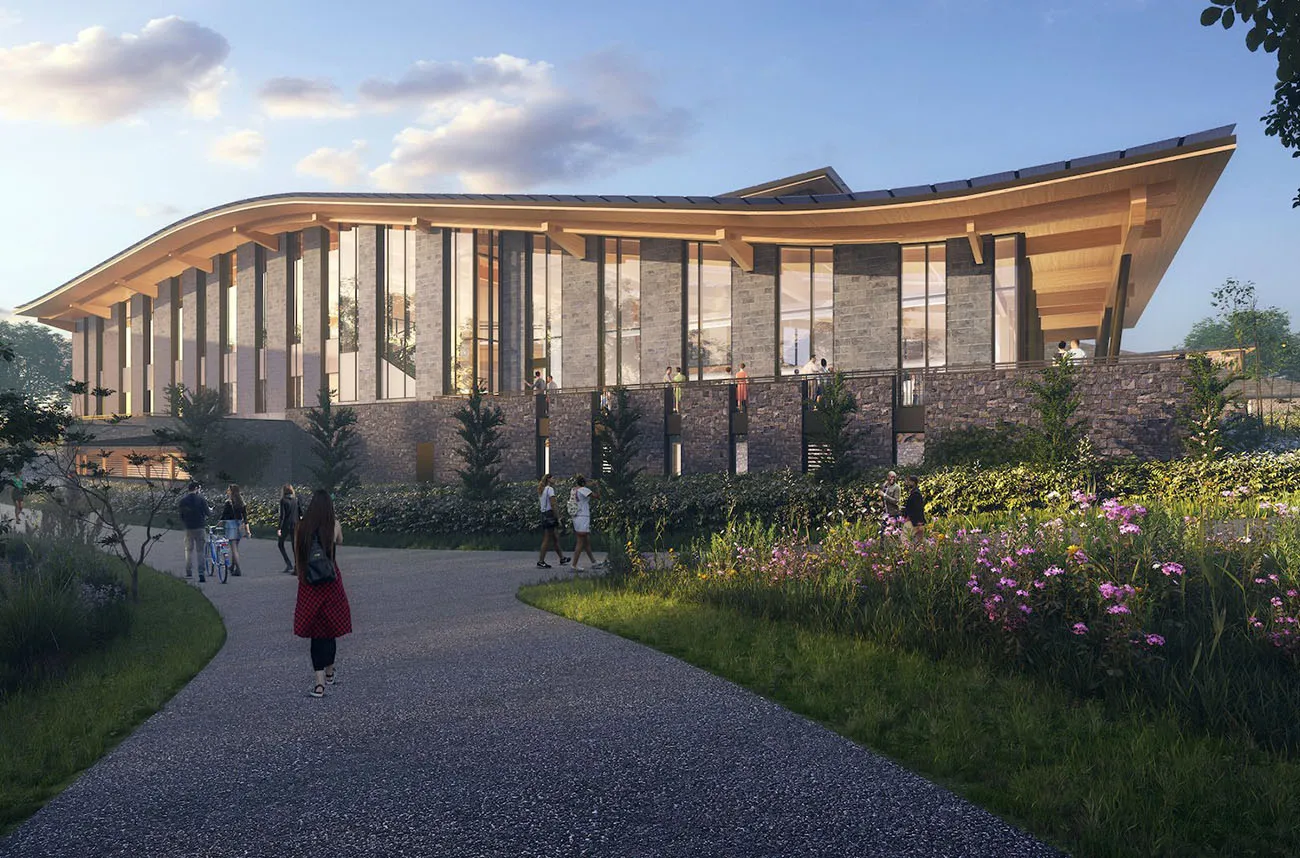- What will the Energy Plan do?
The energy plan will eliminate most on-campus fossil fuel combustion by transitioning to electrified, reliable, and decarbonized renewable energy for the Swarthmore College campus. These changes will result in less than 50,000 metric tons of carbon dioxide equivalents (MTCDE) released into the atmosphere from the College over the next 30 years versus the 350,000 MTCDE released if the College does nothing.
- How much will the Energy Plan cost?
The projected cost of implementation is estimated to be $69 million.
- If the new plant is electric, where will the carbon-free electricity to power the plant come from?
Swarthmore College is working with other local colleges to develop an off-site renewable energy generation facility using solar photovoltaic technology that will put new, renewable electricity onto our electrical grid equivalent to the College’s projected electrical demand. Our electrical grid is operated by PJM Interconnection, a company that operates the electrical grid for all or parts of Delaware, Illinois, Indiana, Kentucky, Maryland, Michigan, New Jersey, North Carolina, Ohio, Pennsylvania, Tennessee, Virginia, West Virginia and Washington, D.C.
- Is Swarthmore College carbon neutral?
In 2010, the College committed to achieving carbon neutrality no later than 2035. Significant steps have been taken since then to improve overall campus energy efficiency. The Energy Plan is Swarthmore’s plan to take this commitment to carbon neutrality to the next level.
- How does the geoexchange plant fit into the Energy Plan?
The geoexchange plant will replace Swarthmore’s high-pressure steam system which provides heat to campus buildings. Originally built in 1911, the steam system is antiquated and relies on the combustion of fossil fuels, mostly natural gas, to function. In contrast, the geoexchange system is a highly efficient zero-carbon energy system. Replacing the outdated steam system with the geoexchange system — including the geoexchange plant, heat pumps, and heat recovery systems — is a key part of making our campus energy efficient and combustion-free.
Energy Plan Implementation and Phasing

Download here The geoexchange heating and cooling plan relies on the ability to circulate hot and chilled water from the geoexchange plant in the basement of the new Dining Hall throughout the rest of campus. This will be accomplished through the installation of new and existing hot water circulation piping (orange) and new and existing chilled water piping (blue). The piping will be installed in phases over the 13-year energy plan implementation, and radiate from the geoexchange plant (green building) to the North, West, East, and South. The initial energy plan implementation phase is to the North, Phase 4 (Phases 1-3 have already been part of the Singer Hall construction). This phase will connect the academic buildings in the North Quad to the geoexchange plant. Phases 5 and 6 will be either to the West or East from the plant, while Phase 7 will route under the train tracks to connect the South campus buildings.




